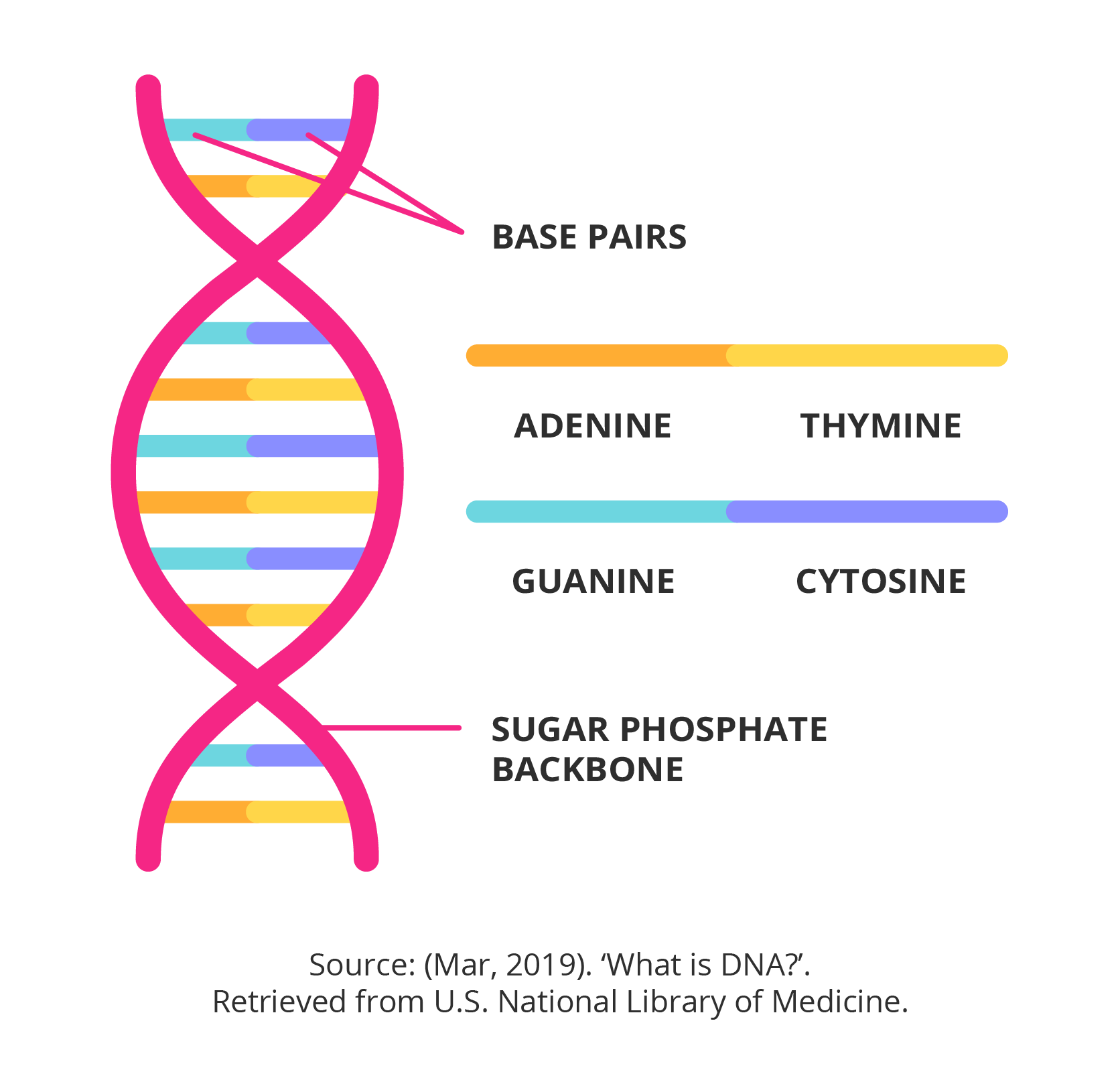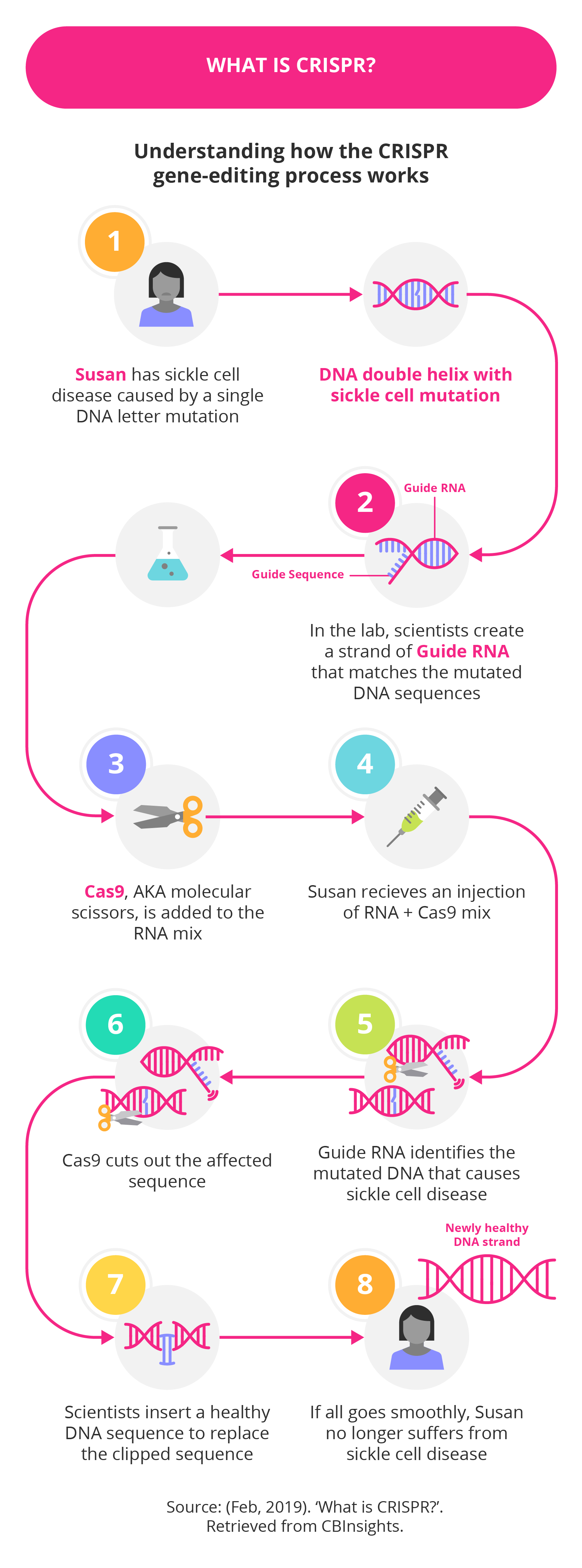Methods and mechanisms for genetic manipulation of plants, animals, and microorganisms
Mushrooms that don’t brown. Maize that kills insects. Medicine tailor-made for the individual. Are these facts or fiction?
Scientists use genetic engineering to manipulate the DNA in an organism’s genome and enhance or modify certain characteristics. Such engineering can be applied to any organism, from a virus to a plant.1
Genetic manipulation is often used to introduce a new, favorable characteristic into the recipient organism, such as tolerance to a chemical herbicide or resistance to insect attacks. It can also be used to alter the organism’s genes’ activity, such as slowing down natural decay.
Key takeaways
- Genetic engineering modifies an organism’s DNA to produce or enhance desired traits through methods like vectors and gene guns.
- It has broad applications across plants, animals, and microorganisms, improving agriculture, enabling medical advancements, and supporting fundamental research.
- CRISPR technology revolutionized gene editing with its precision and accessibility, leading to human therapies and gene-edited food available for purchase.
What is genetic manipulation?
Genetic engineering is a process that uses laboratory-based technology to alter an organism’s DNA and produce a desired trait. This includes deleting a region of a DNA strand, adding a new segment, or altering a base pair.2
DNA is the genetic code found in humans and almost all other organisms that make them behave and appear as they do. Most DNA is housed in the cell nucleus, but a small amount of DNA is also found in the mitochondria — the structures within cells that convert the energy from food into a form that cells can process and use.3

How genetic engineering works
DNA’s double helix consists of a base pair: two bases on opposite strands of the DNA molecule. A base pair forms one ‘rung’ on the DNA ‘ladder’. Among base pairs:
- A (adenine) binds with T (thymine)
- C (cytosine) binds with G (guanine)4
Genetic manipulation may change one base pair (A-T or C-G), remove a whole region of DNA, or add an additional copy of a gene. Gene modification could also include extracting DNA from one organism’s genome and joining it with the DNA of another.
While methods of genetic modification vary, the process generally follows these steps:5
- Identify the genetic information desired for the organism.
- Isolate and copy the information from the organism that displays that trait.
- Insert that characteristic into the desired organism.
- Propagate the organism.
Methods of genetic modification
Methods for genetic manipulation have rapidly evolved over the last century, from basic animal husbandry and inserting genes from one organism into another to more advanced methods of directly editing the genome.
- Plasmid method. Plasmids are small circular pieces of a DNA molecule used to alter microorganisms, such as bacteria. The plasmid is placed in a container with enzymes that cut the plasmid up into small pieces and then joined with the gene of interest.6
- Vector method. This method uses a ‘vehicle’ or vector to transfer foreign genetic material from one cell to another. Vectors are typically viruses that attach to a cell and insert DNA into the host cell before detaching. The DNA, now part of the host cell, will start replicating as part of the genetic information of the host cell and producing the desired trait.7
- Biolistic method. The gene gun method, or biolistic method, uses a gene gun to ‘fire’ DNA particles into a cell. DNA can adhere to extremely small particles of metal, such as gold, silver, or tungsten. The DNA-coated metal particles are placed inside the gene gun, a slight vacuum is created between the gun and the tissue, and the DNA particles are shot into the targeted cell.8
Applications of genetic engineering
Genetic modification is used in a variety of applications, from the food we eat to microorganisms.
Genetic manipulation of plants
The purpose of plant manipulation varies, from creating crops with enhanced traits for increased yield, improved nutritional content, to reducing our reliance on pesticides.
- Pest resistance: One common application is the introduction of genes from a soil bacterium, Bacillus thuringiensis (Bt), into crops like corn and cotton. These Bt crops produce proteins that are toxic to specific insect pests and reduce the need for chemical insecticides. Bt corn acreage in the United States reached 86% in 2024, according to the USDA.9
- Drought resistance: As climate change presents new challenges, researchers are developing genetically engineered crops that can withstand arid conditions. For instance, a drought-tolerant corn variety was developed using a gene from Bacillus subtilis. It activates a protein in the plan that helps mitigate damaging drought effects.10
- Disease resistance: Genetic engineering is used to introduce genes that confer resistance to various plant diseases. For example, Hawaiian papaya crops were devastated by the papaya ringspot virus until genetically engineered virus-resistant varieties were introduced in the 1990s.11
Genetic manipulation of animals
Genetic engineering in animals is employed for a variety of purposes, from improving livestock productivity and disease resistance to biomedical applications.
- Disease resistance: Researchers are working to engineer animals with increased resistance to common diseases, reducing the need for antibiotics. For example, the FDA approved the use of gene-editing technology that creates pigs that are resistant to porcine reproductive and respiratory syndrome (PRRS) virus, a disease that caused $1.2 billion in losses per year for the U.S. pork industry between 2016 and 2020.12
- Research models: Genetically engineered animals, particularly mice, are used as research tools for understanding human diseases and testing new therapies. Scientists can introduce or deactivate specific genes in mice to mimic human conditions like cancer, Alzheimer’s, or cystic fibrosis, providing critical insights into disease mechanisms.13
Genetic manipulation of microorganisms
The genetic engineering of microorganisms is also used across various industries, from medicine and biotechnology to environmental remediation and food production.
- Insulin production: One of the earliest examples of microorganism genetic engineering is the alteration of E. coli bacteria to produce human insulin. Previously, insulin for diabetics was extracted from animal pancreases. Humulin, a recombinant human insulin, became the first genetically engineered drug approved by the FDA.14
- Enzyme production: Genetically engineered microbes produce industrial enzymes used in countless applications, including detergents, food processing, textiles, and paper manufacturing. These enzymes offer more efficient and environmentally friendly alternatives to traditional chemical processes.15
CRISPR: the next step in genetic manipulation
CRISPR-Cas is a technology of genetic engineering that allows the genetic material of viruses, bacteria, cells, plants, and animals to be altered in a relatively simple, but very accurate and efficient way. The technology works by changing characteristics through genetic alterations or by adding entirely new genetic information.16
- 2007: Bacterial immunity discovered
Researchers Rodolphe Barrangou and Philippe Horvath at Danisco, a leading yogurt culture producer, discovered something in the bacterium Streptococcus thermophilus. They found unusual clusters of repeated DNA sequences, or CRISPRs, that matched the DNA of viruses that attacked the yogurt culture. This ‘genetic memory’ allowed the bacteria to identify and fight off these invading viruses.17
- 2008: A universal editing tool
A year later, Erik Sontheimer and Luciano Marraffini at Northwestern University published a paper suggesting that CRISPR could be an all-purpose genome-editing tool. Their research demonstrated that the spacers between the bacterial CRISPR segments effectively ‘cut up’ the invading viral DNA, rendering the virus harmless. They theorized that these repeating spacers could be programmed to target and alter genetic material in most living things.18
- 2012: Therapeutic potential emerges
In 2012, Jennifer Doudna and Emmanuelle Charpentier discovered how CRISPR could potentially provide gene therapy for patients with genetic diseases.19 In 2013, Feng Zhang and George Church built on this research and demonstrated CRISPR’s efficacy in editing human and mouse cells, specifically highlighting its therapeutic applications for nervous system disorders.20
How CRISPR works
You can think about CRISPR like the ‘find and replace’ function in a word processor, but for DNA: CRISPR finds the genetic data you wish to alter and replaces it with new material.
There are three key components that allow CRISPR to work effectively:21
- Guide RNA (gRNA). A piece of RNA (a genetic cousin of DNA) is engineered in a lab that finds the targeted gene.
- CRISPR-associated protein 9 (Cas9). The ‘scissors’ that cut out the undesired DNA.
- DNA (new material). The desired piece of DNA that is inserted after the cut.

CRISPR is more affordable and available than earlier forms of genetic engineering. Research institutions deliver CRISPR components worldwide — non-profit Addgene reports sharing nearly 300,000 CRISPR plasmids since the organization’s start.22
CRISPR-edited organisms are already in our grocery stores:
- In 2023, CRISPR-edited mustard greens hit U.S. shelves, engineered to remove the pungency that makes them taste bitter while keeping the nutritional value.23
- CRISPR gene editing is being used to make larger tomato varieties sweeter, like cherry tomatoes, by disabling genes that limit sugar production.24
When it comes to genetic modification and engineering on plants, animals, and microorganisms, the methods listed ultimately result in the same thing: altering the basic DNA structure of a cell in order to bring about a preferred characteristic. As these scientific methods continue to improve, dynamic gene modification will continue to provide alternative solutions to the way we live on the earth.
Explore the possibilities of CRISPR genetic engineering with online health science courses offered on GetSmarter in collaboration with the world’s leading universities.
- 1 (Nd). ‘What is genetic engineering?’ Retrieved from Your Genome. Accessed June 25, 2019.
- 2 (Jul, 2025). ‘Genetic engineering’. Retrieved from National Human Genome Research Institute.
- 3 (Nd). ‘What is DNA?’ Retrieved from MedlinePlus. Accessed July 7, 2025.
- 4 (Jul, 2025). ‘Base pair.’ Retrieved from National Human Genome Research Institute.
- 5 (Mar, 2024). ‘Science and history of GMOs and other food modification processes.’ Retrieved from U.S. Food & Drug Administration.
- 6 (Apr, 2025). ‘What is a plasmid? Role in genetic engineering and cloning.’ Retrieved from Synapse.
- 7 (Jan, 2024). ‘Vectors 101.’ Retrieved from American Society of Gene and Cell Therapy.
- 8 Baltes, N., Gil-Humanes, J., et. al. (2017). ‘Genome engineering and agriculture: Opportunities and challenges.’ Retrieved from ScienceDirect.
- 9 (Jan, 2025). ‘Adoption of genetically engineered crops in the United States – recent trends in GE adoption.’ Retrieved from Economic Research Service, U.S. Department of Agriculture.
- 10 McFadden, J. (Mar, 2019). ‘Drought-tolerant corn in the United States: Research, commercialization, and related crop production practices.’ Retrieved from Economic Research Service, U.S. Department of Agriculture.
- 11 (Jun, 2022). ‘Understanding the genomic modifications in transgenic papaya.’ Retrieved from U.S. National Science Foundation.
- 12 Scott Nolen, R. (May, 2025). ‘FDA approves gene-editing tech creating PRRS-resistant pigs.’ Retrieved from American Veterinary Medical Association.
- 13 (Aug, 2020). ‘Knockout mice fact sheet.’ Retrieved from National Human Genome Research Institute.
- 14 (Jul, 2019). ‘The history of a wonderful thing we call Insulin.’ Retrieved from American Diabetes Association.
- 15 (Nd). ‘Biotechnology.’ Retrieved from Enzyme Technical Association. Accessed on July 21, 2025.
- 16 (Jul, 2025). ‘CRISPR.’ Retrieved from National Human Genome Research Institute.
- 17 Cohen, J. (Feb, 2017). ‘How the battle lines over CRISPR were drawn.’ Retrieved from Science Mag.
- 18 Marraffini, L., et al. (Dec, 2008). ‘CRISPR interference limits horizontal gene transfer in Staphylococci by targeting DNA.’ Retrieved from NCBI.
- 19 (Oct, 2020). ‘Press release: Genetic scissors: a tool for rewriting the code of life.’ Retrieved from The Nobel Prize.
- 20 Cohen, J. (Feb, 2017). ‘How the battle lines over CRISPR were drawn.’ Retrieved from .
- 21 (Aug, 2021). ‘What is CRISPR?’ Retrieved from CBInsights.
- 22 Leeson, R. (Apr, 2024). ‘Twenty years of Addgene sharing: CRISPR.’ Retrieved from Addgene.
- 23 (Mullin, E. (May, 2023). ‘The first Crispr-edited salad is here.’ Retrieved from Wired.
- 24 LePage, M. (Nov, 2024). ‘Sweeter tomatoes are coming soon thanks to CRISPR gene editing.’ Retrieved from NewScientist.

